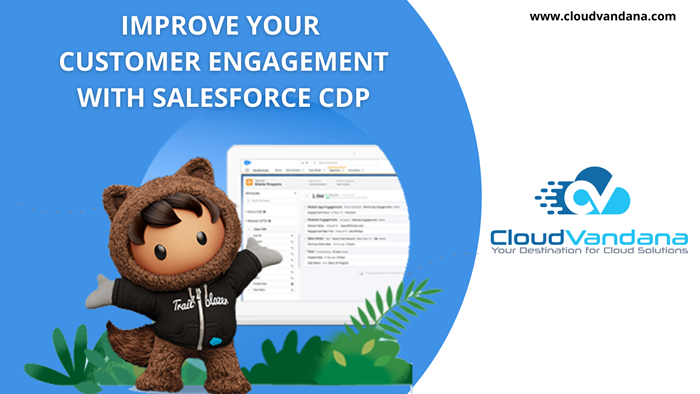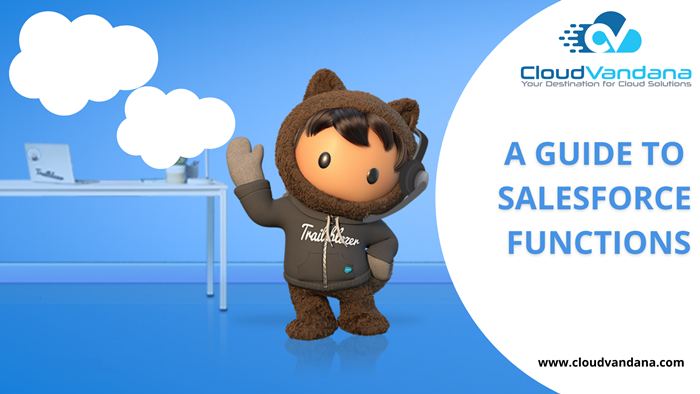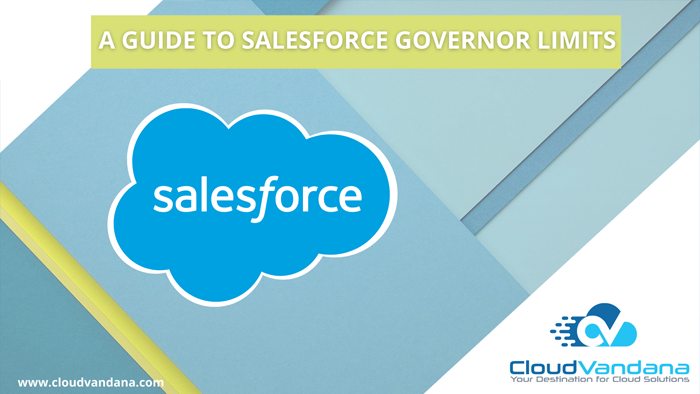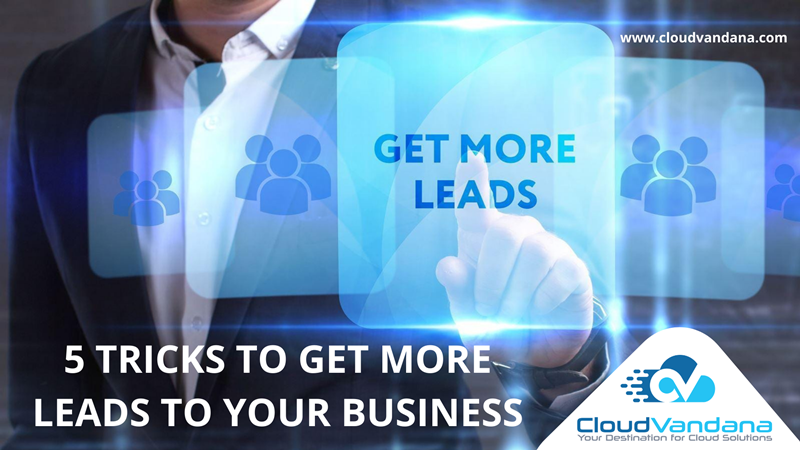IMPROVE YOUR CUSTOMER ENGAGEMENT WITH SALESFORCE CDP

Salesforce CDP or Customer Data Platform allows marketers to capture, unify, segment, and activate all the customer data. It provides marketers a single source of truth for every customer to help them personalize their experiences across marketing, commerce, sales, service, and many more. Table of Contents Customer Data Work Process Of Salesforce CDP Recent Improvements Of Salesforce CDP Enhanced Consent and Preference Management Unified Data Model and Automated Data Mapping Dynamic Customer Journeys and Cross-Channel Orchestration Advanced Segmentation and Data Enrichment Predictive Analytics and Event-Driven Architecture Expanded Partner Ecosystem and Collaboration Tools Customizable Dashboards and Geospatial Data Capabilities Enhanced Data Governance and Integration with Support Tools YOU MIGHT ALSO LIKE This platform simplifies and connects records from various data sources to provide a single customer view. This platform was known as ‘ Customer 360 Audiences’. This is a different platform that suits well with Salesforce and enhances the marketing Cloud Platform. It is designed to provide a unified view to marketers to understand the customers better. It is possible to merge the various customer activities into one single, combined identity profile in a single integrated platform. Salesforce CDP fulfills those requirements very well. Customer Data There are different data categories for customer data. All these data help a marketer understand a customer and make a customer profile. Attaching all these data adds power to satisfy a customer. For a personalized, relevant offer to customers, marketers need to collect, integrate, and update each customer’s data. Here comes the need for CDP, which is the most exciting platform for marketers. Work Process Of Salesforce CDP This platform works as a central hub, where customer data come from different channels like Salesforce Service Cloud, Marketing Cloud, and Sales Cloud. These data from the various platforms are mapped to a unique customer ID. The customer data becomes related, searchable, and actionable to the marketers through this central ID. Customer 360 started the journey with two products. First, customer 360 Audiences is a Customer Data Platform(CDP), with some added Master Data Management (MDM) capabilities. Organizations can decide which functionality to choose while choosing the CDP and MDM capabilities. Generally, a marketing manager needs a CDP to get the correct customer segmentation; on the other hand, a Customer Service Executive needs an MDM as he might want to see the 360 views of a customer in terms of cases complaints, requests for refunds, etc. Customer 360 was launched as a central part of Salesforce Vision. Since then, Customer 360 offering companies a complete view of their customers on a 1: 1 level for personalized customer interaction. Salesforce Customer 360 is optimized for scale and connects Sales, Service, Marketing, IT, Analytics, and Reporting. Recent Improvements Of Salesforce CDP Enhanced Consent and Preference Management Salesforce Customer Data Platform (CDP) has recently undergone several enhancements aimed at improving its functionality and usability. One of the significant advancements is in enhanced consent and preference management, which ensures that customer communications and data usage align with individual choices and legal requirements. Unified Data Model and Automated Data Mapping The platform now features a more robust and scalable unified data model, standardizing data across various sources to improve consistency and facilitate actionable insights. Additionally, AI-driven automated data mapping and harmonization reduce the time and effort needed to integrate and normalize data from disparate sources. Dynamic Customer Journeys and Cross-Channel Orchestration Dynamic customer journeys have been improved to adapt in real-time to customer behavior, providing more relevant and timely interactions. The platform’s cross-channel orchestration capabilities have also been enhanced, ensuring a seamless and consistent customer experience across multiple channels such as email, social media, mobile, and web. Advanced Segmentation and Data Enrichment Advanced segmentation and AI-powered lookalike audience features enable marketers to target customers and prospects more effectively, while integration with third-party data providers enriches and augments customer profiles with additional attributes. Predictive Analytics and Event-Driven Architecture Predictive analytics and scoring capabilities have been improved to help identify high-value customers, forecast customer lifetime value, and predict churn, aiding in more strategic decision-making. The support for an event-driven architecture allows real-time responses to customer actions, triggering personalized engagements based on live events. Expanded Partner Ecosystem and Collaboration Tools Expanding the partner ecosystem with more third-party applications and connectors available in the Salesforce AppExchange facilitates easier integration and extends the platform’s capabilities. Improved collaboration and sharing features enable teams to share insights, segment definitions, and customer journey maps within the organization, fostering better teamwork and alignment. Customizable Dashboards and Geospatial Data Capabilities Customizable dashboards and reporting options allow users to create tailored views and reports to meet specific business needs and objectives. Geospatial data capabilities introduce location-based information into customer profiles, enabling location-aware marketing and analytics. Enhanced Data Governance and Integration with Support Tools Enhanced customer data governance provides more control over data access, usage, and lineage, ensuring responsible and transparent data management. Furthermore, deeper integration with customer support tools like Salesforce Service Cloud offers a more comprehensive view of the customer, enhancing service interactions with context-rich data. These improvements collectively enhance Salesforce CDP’s ability to unify customer data, derive actionable insights, and deliver personalized experiences across all customer interactions. These were an overview of the Salesforce CDP. People who have already purchased the Marketing Cloud Audience Builder can continue using that, but new customers are advised to add this platform to their ecosystem. Are you interested in Salesforce CDP or looking for a seamless Salesforce implementation? Please feel free to contact CloudVandana; we would happily arrange a demo for you. Image courtesy: Salesforce Book a Demo Request a Free Consultation YOU MIGHT ALSO LIKE
A GUIDE TO SALESFORCE FUNCTIONS

As we know that Salesforce Functions is a new service on the Salesforce Platform that allows us to deliver a more scalable experience by extending the data and workflows that we already have, making them more sturdy with the power of elastic compute and open language ductility. It is a service that allows developers to write code that integrates with data and events on the Salesforce platform and run it on-demand with an elastic scale in a serverless environment. Salesforce functions will help you: What makes them great Elastic Scale: You can extend Salesforce data with an elastic compute scale that is on-demand. Stay on Platform: Build with pre-configured secure and safe access to C360 data. Expand Talent Pool: You can extend Salesforce data with elastic Build inclusively with all your developer talent using open languages and tools that scale on demand. Why Salesforce Functions Other than being another elastic service that scales up based on the usage and automatically scales down on low usage, Salesforce Functions brings in some unique industry-first capabilities that can be extremely useful and productive for companies that are invested in the Salesforce platform: Are you looking for a registered Salesforce partner to guide you through your Salesforce implementation and maintenance? Please feel free to contact CloudVandana to get started. Request a Free Consultation YOU MIGHT ALSO LIKE
5 Reasons to Outsource Your Salesforce Development Needs

Salesforce has become the #1 trusted Customer Relationship Management solution for organizations across the globe, especially the organizations, who deal with the customers directly. However, Salesforce is a platform that needs endless configurations and support to handle operations and technical issues. As a result, companies require Salesforce experts to implement and maintain the venue to enhance their business processes. But sometimes, they face the dilemma of choosing between in-house and outsourced Salesforce development. When selecting the right Salesforce development services or Salesforce developers, there are no one-size-fits-all solutions to choose from. For some companies, in-house Salesforce Development works best; on the other hand, some organizations find the outsourced Salesforce development to be the best. In addition, they prefer to hire certified Salesforce professionals for easy scaling of their business. Today, CloudVandana will describe five key benefits of outsourced Salesforce Development. But companies can always choose their best solution depending on the business models and project requirements. There are lots of great reasons to include the outsourced model. Following are the top 5 benefits of them. 1. Find The Right Resources Experienced Salesforce developers can be tough to find, and companies might be competing against similar companies for the same resources locally. But the Salesforce developers who are working for third-party development companies mainly work remotely. As a result, companies can scale up or scale down to build the right team depending on the project needs. 2. Controlling The Operating Costs Hiring an outsourced Salesforce developer is more cost-effective than in-house Salesforce developers. There are various costs and complexity associated with an in-house employee, like the cost of the hiring process, onboarding, employee benefits, etc. Companies sometimes can’t find the right talent, even with all of these. But in the outsourcing process, companies can expand or reduce the team size as per the requirement. Outsourcing provides the right talent immediately to the organization. Companies can terminate the contract when the projects get over. So no extra cost is needed to maintain those resources. 3. Improve The Company Focus And Expertise With the help of outsourced Salesforce development, companies can focus on the internal team and another administrative processes. In-house employees can concentrate on the core business procedure, ensuring that experienced Salesforce professionals will maintain the Salesforce ecosystem. Certified Salesforce developers through a third-party help the organizations enhance their project, providing the project deadline. 4. Internal Resources Specialized Salesforce development partners specializing in Salesforce development administration can help to pick up the slack or become part of the team for the long term. 5. Strategic Salesforce Roadmap Salesforce roadmaps give an overview of how the clients generate more quality leads and pipeline opportunities. In addition, organizations can even control the Salesforce strategies on the outsourced employees. This helps them to meet their development and integration requirements. Are you thinking about outsourcing Salesforce development? Please feel free to contact CloudVandana today to hire certified Salesforce experts. Request a Free Consultation YOU MIGHT ALSO LIKE
SALESFORCE FOR EVERYTHING

Salesforce, the #1 CRM solution, connects all the departments of an organization through a single integrated platform for better customer interaction. Companies sometimes find the business processes like marketing, sales, operations difficult as they do not get the proper access to those files or can’t operate the files remotely. As a result, the workflow becomes slow. In addition, companies become frustrated by the customer data as it is not sharable or readable. For example, the sales team doesn’t share data with marketing; similarly, the marketing team has no knowledge when a customer contacts customer service. Salesforce provides a complete view of their customers remotely from any device. After the Salesforce implementation, employees from marketing, Sales, Commerce, Service, and IT become able to share a single customer view. This feature is called Salesforce customer 360. It is a collection of powerful applications that help the employees to experience the holistic view of the customers related to the brand or the organization. Salesforce CRM provides a more connected, enhanced customer experience, leading to more conversion and long-term relationships. Salesforce for Multitasking Salesforce is recognized as the world’s #1 CRM software, and the essential feature is Salesforce lives in the cloud. As a result, all the employees from different sectors are remotely well connected on the platform. After the Salesforce and Slack integration, communication between customers, teams, and partners has become simplified, and various new ways have been opened up. The holistic view shortens the time to resolve customer issues and enables highly personalized interactions. Salesforce For Marketing Salesforce helps the marketing team generate messages to the right person on the right channel at the right time. Salesforce helps to improve lead generation, customer acquisition, and upselling and cross-selling opportunities. Salesforce helps build connected brand journeys based on the customer’s interactions and provides them with the best customer experience. Salesforce For Sales With the help of Salesforce, the sales team can concentrate more on customers than spending lots of time in the administrative processes like data entry, making quotations, follow-ups, etc. Instead, the sales team can leave those tasks on Salesforce automation and focus on lead nurturing. With the connected services, the Sales opportunity increases, and customers feel more connected with the organization. As a result, Salespeople cab closes the deals faster. Salesforce For Commerce Salesforce has many tools for business-to-consumer( B2C) and business-to-business (B2B) commerce experience that enhances revenue engages more customers, and connects commerce to the business. In addition, this platform is easy to implement and adapt and can scale anywhere. Salesforce For Customer Service Salesforce delivers personalized and consistent customer interactions from the contact center to the field. In addition, Salesforce can help businesses to manage various touchpoints, including customer service, self-service channels, and digital channels. Salesforce For Information Technology Salesforce’s integrated Information Technology tools can help IT organizations to build modern applications to meet employees, partners, and customer needs. So from the above discussion, we can see that Salesforce has customized solutions for every sector. Are you looking for a customized Salesforce solution to get the desired outcome for your organization? Please feel free to contact CloudVandana today to get started. Request a Free Consultation YOU MIGHT ALSO LIKE
TRACK THE FUNDRAISING PROCESS WITH SALESFORCE

Fundraising is all about excellent relationship building and hard work. Fundraising requires strategic decision-making. Implementing Salesforce for the organization can change the whole work scenario. Salesforce is a great customer relationship management software and perfectly designed to manage and track business relationships for development. With the Nonprofit Success Pack, Salesforce becomes a fundraising tool that streamlines operations. Organizations can connect with donors in the community to involve them in the organizational work. Today, in this blog, CloudVandana describes five basic fundraising tracking processes that a development team can track entirely in Salesforce. Read another blog on Salesforce for Nonprofit Organization by CloudVandana. 1. Moves Management Agile, strategic decision-making enables moves management. Salesforce allows the development team to engage with their donors more effectively. Flexibility is a great feature that helps the development team look at the donors at the individual level. Developers can invent many ways to immediately secure pledges and gift payments to keep the funding pipeline moving. So, Salesforce can help nonprofits by informing more strategic campaigns, appeals, and other touchpoints. 2. Gift Processing Salesforce’s open API and flexible format allow integrations with various fundraising platforms and enable nonprofit’s gift processing requirements within the Salesforce org. This makes it easier to process the donation process by keeping track of general accounting units, recurring donations, and payment information. 3. Grant Process And Deadlines Salesforce’s reporting capabilities allow tracking the deadlines to work best for the team and members. In addition, developers can attach files directly to the relevant grant’s record. Developers just need to ensure that all the information is stored in a single place. 4. Touchpoints The whole fundraising process depends on the relationships between the organization and the donors. Arranging meetings, phone calls, emails can build those relationships. Fortunately, Salesforce can represent the touchpoints that the team and the donors are engaged in. The campaign object can be a great way to interconnected appeals, events, or initiatives. Fundraisers can use Custom objects and fields to provide more variations to maintain strong relationships with the donors. 5. Donor Networks And Connections It is known to all fundraisers that the best way to source new donor prospects is through the connections of existing donors. Salesforce allows the fundraisers to track the crucial relationships in various ways to reflect the interconnection of the donor’s real lives. On each donor’s record, fundraisers could see the details of the donors. This helps the fundraisers how the donors are interrelated throughout the community. Are you looking for this robust solution to add value to your development process? Please feel free to contact CloudVandana, for a hassle-free Salesforce implementation. Request a Free Consultation YOU MIGHT ALSO LIKE
What Does the Future Hold for Salesforce? Insights and Predictions

Salesforce is recognized as the #1 CRM across the world. Salesforce professionals are in huge demand in today’s marketplace. All companies, either small startups or tech giants, use this robust and customizable Salesforce platform. Salesforce is an excellent and advanced platform that releases three updates per year. Salesforce offers updated and unique features to the ever-evolving and growing needs of businesses of various sizes. According to Google, Salesforce is the most searched and desired CRM platform. Salesforce has been ruling the CRM industry for many years. Today, in this article, CloudVandana is sharing the top predictions of Salesforce for the coming days. Increasing Demand Salesforce always comes up with new offerings and something new to utilize to help businesses reach their goals. Salesforce generally introduces new tools and products with every release implemented in the platform. Salesforce constantly introduces innovative technologies that enable it to stay ahead of other competitors. Organizations use Salesforce for almost every work process, like ROI, better customer interaction, real-time reporting, and customized automation processes. This robust technology will make all the business processes easy and provide a competitive business advantage. So it is very easily predictable that the role of Salesforce will be essential for the growth of all the businesses Transformation From Classic Edition To Lightning Edition Salesforce’s intelligent user interface is gaining popularity among customers. So it can see that the future of Sales and the entire CRM process will be more potent with the customized offerings of Salesforce. Users always search for a solution with an easy operating system and user interface. Salesforce provides all the requirements to users to enhance their productivity. So for various added opportunities, users are migrating from Salesforce Classic to Salesforce Lightning. Endless Opportunities For Marketing Cloud The Salesforce marketing cloud is becoming bigger and better with increased adoption across the Salesforce ecosystem. With the innovations and diverse functionality, it is very predictable that there will be increased adoption of Salesforce Marketing Cloud in the upcoming days. Big Data And IoT The demand for Salesforce interaction with Big Data and Data Science will be enormous. Big Data will boost the Service Cloud and help marketers strengthen the data for marketing through the marketing cloud. Organizations across the world have adopted big Data, and it is the fastest-growing technology. Salesforce has stepped into the healthcare industry with loT. So in this industry, also Salesforce will widely spread its wings, and in the coming years, it is .predictable that Salesforce offerings will be beyond our expectations. Are you looking for Customer Relationship Management software for the endless growth of your organization? Please contact CloudVandana today and take a free consultation call from the Salesforce experts of CloudVandana. Request a Free Consultation YOU MIGHT ALSO LIKE
A GUIDE TO SALESFORCE GOVERNOR LIMITS

Salesforce Governor Limits are the runtime limits enforced by the Apex runtime engine to write scalable and efficient code. Such limits prevent the abuse of the resources (memory, database, processed records, and script statements) by establishing limitations. All the applications, services, and programs run in a multi-tenant environment on the platform. There resources like memory, network, database connections are shared with every other program on the forum. Salesforce governor limits are active as Salesforce and Apex runs in a multitenant environment. In this article, CloudVandana will be sharing an overview of Governor Limits in Salesforce. Salesforce Governor Limits Salesforce Governor Limits are usage enforced by Salesforce to ensure efficient processing. This platform allows for multiple users of the forum without imminent performance. Salesforce governor limits depend on the Salesforce Edition. Professional Edition enables one to have 50 custom objects but 2000 for Unlimited and Performance. For example, the limit for Apex code per organization is 6MB, but this limit can be increased on a case-by-case basis by Salesforce Support. Other limits depend on the combination of Salesforce Edition and user license on the organization. Other governor limits are related more to programming in Apex. For example, an Apex class/ execute anon script can only have 100 select statements per transaction. Some of these limits are called ‘hard’ as they cannot be increased, so a developer’s new approach would be needed to achieve the desired result. Types Of Salesforce Governor Limits There are other limits for non-Apex as follows- Importance Of Salesforce Governor Limits Governor limits in Salesforce prevent other organizations from using and executing lengthy code, which can take up a lot of space in the memory and even the entire cloud CPU. As Apex provides wholly different or unique coding limits, these governor limits help the users with the proper coding with Apex. Are you looking for a registered Salesforce Partner for a seamless Salesforce integration and automated business process? Please feel free to contact CloudVandana today to get started. Request a Free Consultation YOU MIGHT ALSO LIKE
5 USEFUL TIPS FOR PARDOT ENGAGEMENT STUDIO

Pardot Engagement Studio is Pardot’s next-generation lead nurturing tool and a true intelligence engine of the marketing automation platform. Engagement Studio lets the user build, test, and report on powerful engagement programs that let the user send targeted emails based on prospect behavior and complex qualifying values. It is designed to run automated email campaigns for various use cases. In this article, CloudVandana will discuss the best practices for Pardot Engagement Studio. Pardot Engagement Studio Best Practices 1. Capturing Engagement With lists Vs. Tags Setting actions in Engagement Studio to ‘add to list’ is a useful way to see engagement, and when the prospects reach the end of the program, if the user wants to take further action by identifying who is the most and least engaged prospects were and segmented them into cold, warm or hot leads. 2. Consider Before Adding Score Users don’t always need to add actions to increase the prospect’s score. If prospects are submitting forms, or if they’re clicking on the webpage, all of these activities will already apply points to the total score. Users don’t have to reapply points in Engagement Studio; otherwise, they will begin inflating numbers, which the users do not want to do. 3. Add Comments While Editing If the user needs to pause and edit a program, the user can proceed to add comments. If they don’t keep track of the changes they’ve made, it becomes a guessing game, and sometimes users do not need to dig deep to find out the working process and the transition. 4. Suppression List Can Also Be A Target List When the user has a program, and the user is confused about which prospect should not be there, that group of people could be the recipient list of another program running. 5. Complex Rules Should Be Used Users can take segmentation further by adding more criteria to the rule steps. This scales down prospects, creating more targeted sends and actions. In addition, users should reduce the number of rule steps they need in Engagement programs. Are you planning to implement Salesforce in your organization? Please feel free to contact CloudVandana to know the suitable Salesforce solution for your company. Request a Free Consultation YOU MIGHT ALSO LIKE
Salesforce Objects: How They Work and Why They Matter

Salesforce objects are database tables that permit the admins to store the data specific to an organization. For every organization, the main important element is customer data. Maintaining the customer database is the main challenging part of every organization. As customers are the backbone of every industry, providing them with the best solution is the main focus area of every organization. So it is almost impossible to handle and manage the large volumes of customer data by the sales team using the old methods. Salesforce CRM is the most effective CRM platform that can solve these problems. It provides the clients with a high degree of automation and efficiency in operating customer databases. Salesforce marketing cloud and Salesforce sales cloud provide the end to end solutions to the organization’s marketing activity. Salesforce reduces the time and manual efforts by putting all the things on automation so that they can concentrate on the other productive works. Salesforce Developers, Consultants, and other operators should be well trained to complete all the processes in a seamless way. Salesforce objects are considered the building blocks of the Salesforce CRM platform. They are mainly the digital data tablets containing important data and information of a business organization. Salesforce objects can be compared to different tablets of an Excel document containing clear rows and columns. Data is stored in the form of relational tablets in different Salesforce objects. So Salesforce objects are nothing but virtual tablets that stores specific data to different business organizations. Salesforce objects can be segmented into two categories. Standard objects and custom objects. Recently, certain developers have added a new segment of Salesforce object, which is called External object. Standard Salesforce Objects Standard Salesforce Objects are created for the concerned project. These are pre-installed in Salesforce CRM and suitable for various environments. Users just need to check if the standard object is logged into the platform. There is no complicated programming or coding required to use a standard object in Salesforce. But it is always advisable to hire a Salesforce professional to complete the task. The major standard Salesforce Objects are- From the long list mentioned above, CloudVandana will describe the four main objects. Lead Lead is the most important element for conducting sales and generating revenues for organizations. If driving sales is considered the primary aim of a business, generating and managing leads is the most important activity for the sales team. Salesforce object covers all the leads generated and managed by the sales team. After the conversion of a lead, other things like contacts, accounts, opportunities, etc, can be created. Account After the conversion, the next focus area is on accounts. This is a standard Salesforce object that consists of all the firms that a user maintains the relationship with. Salesforce object also consists of individual customers that a company deals with on a regular basis. The account fields such as the name of the account, the industry, and the type of business should be looked into while managing the object of account using Salesforce CRM. Contact This is the standard Salesforce object consisting of individual people for specific accounts. For example, if someone has a business enterprise as an account, the company as a whole will belong to the account object, and each employee of the organization would belong to the contact object. Opportunity The object of the opportunity contains all the events that have the potential to convert leads, close deals faster, and gather revenue for the business. The object also contains certain pending deals that can convert if the opportunity is duly taped by the sales team. Custom Salesforce objects Custom Salesforce objects are highly influential in the process of developing applications as they are highly customizable and offer developers a format that smoothens data sharing. Some important elements of custom objects are- So Salesforce Object is a very important tool in order to develop and implement Salesforce CRM. Do you have any further queries or looking for a customized Salesforce Solution to implement and maintain Salesforce CRM in your organization? Please feel free to contact CloudVandana to get started. Request a Free Consultation YOU MIGHT ALSO LIKE
5 TRICKS TO GET MORE LEADS TO YOUR BUSINESS

Leads are the backbone of every business or organization. Marketers must develop a proper strategy to generate more business leads. They first need to identify the target market, then market the brand effectively, and finally create relevant and interesting content to attract the target audiences. Marketers should try to adapt the strategy that best suits the customers’ expectations. In this competitive digital world, outdated content or strategies like cold calling and paying for leads can’t help marketers reach their target. They need solid, proven techniques to draw more leads. Table of Contents Lead Generation 5 Tricks To Gain More Leads 1. A/B Testing The CTAs 2. User Generated Content 3. Free Trial Or Download For Limited Period 4. Hosting Training Webinars 5. Introduce An Influencer YOU MIGHT ALSO LIKE Lead Generation Lead generation is a simple process for generating new potential customers for a business. It can be divided into two parts. In the first step, marketers must draw traffic to the website through various marketing channels. Then, the marketing and sales teams must convince these visitors and push them through the sales funnel. This process is called lead nurturing. The sales team can reach out to them through the information they provide and convince them to become paying customers. So, retaining quality leads is essential as they increase the conversion rate. For example, a website has acquired 1000 random leads; from there, only two prospects converted into paying customers. On the other hand, a website got 100 leads, and from there, 80 prospects converted into paying customers. So, getting a high-quality lead is more critical than getting random leads, where the chances of conversion are meager. 5 Tricks To Gain More Leads Lead generation depends on organizations and their niches. The trick that works best for one organization might not work well for another. There are many ways to find new prospects. In this blog, CloudVandana shares the five most important tricks that will work for almost every type of business. 1. A/B Testing The CTAs A CTA, or call to action, is a prompt that guides someone to take a specific action. Marketers can add different CTA buttons and track visitors’ performance. Examples of practical CTA buttons are- CTAs are the first step in bringing visitors to the sales funnel, so it is very important to get them in the right way. Marketers might include a visual element if required. A/B testing or split testing lets marketers compare different variations of the same CTA button to point out the differences in actions. Once the marketers can identify the most critical version, they can quickly generate more leads. Google Analytics is a beneficial tool to measure these performances. 2. User Generated Content User-generated content (UGC) is content generated by users. UGC can take different forms, such as product reviews, testimonials, articles or posts, etc. It is a marketing tool that provides free marketing or branding. Marketers can post customer reviews on the website to create a brand impression and encourage other prospects to complete the purchase. 3. Free Trial Or Download For Limited Period Marketers can offer a free trial or download to increase the trust and brand value of the products. A visitor, who is also a subscriber, might not be ready to purchase the products or offerings if the person does not get to know the product very well. A free trial is the best option to interest the prospect in the product. If the prospects become interested in the product or offerings, they will be more likely to complete the purchase process, and the process will increase their loyal following. 4. Hosting Training Webinars A training webinar is an opportunity to showcase knowledge and experience. It also creates an impression in the audience’s minds that the organization is prepared to share this knowledge for free, which helps build trust in the company. Hosting training webinars is very useful for both B2B and B2C companies. For example, B2B companies, which focus on selling software to small businesses, might host a product demo; conversely, B2C companies can host webinars on the product’s process. Marketers should advertise the webinar effectively. They can promote it on LinkedIn or other social media channels. Marketers can also create a database with the contact details of the interested parties. The webinar is a great way to introduce people to the product and the brand. 5. Introduce An Influencer Marketers can partner with influencers or influential people to create an impact on the audience’s mind. Influential figures might include industry leaders, tech experts, social media influencers, analytics, etc. They can influence audiences to take desired actions like downloading an app or booking a free demo. So, influencers are another important source of lead generation. Have you checked our innovative product CV Files? Book a demo today or contact CloudVandana for a customized Salesforce Solution. Schedule A Call Request a Free Consultation YOU MIGHT ALSO LIKE






